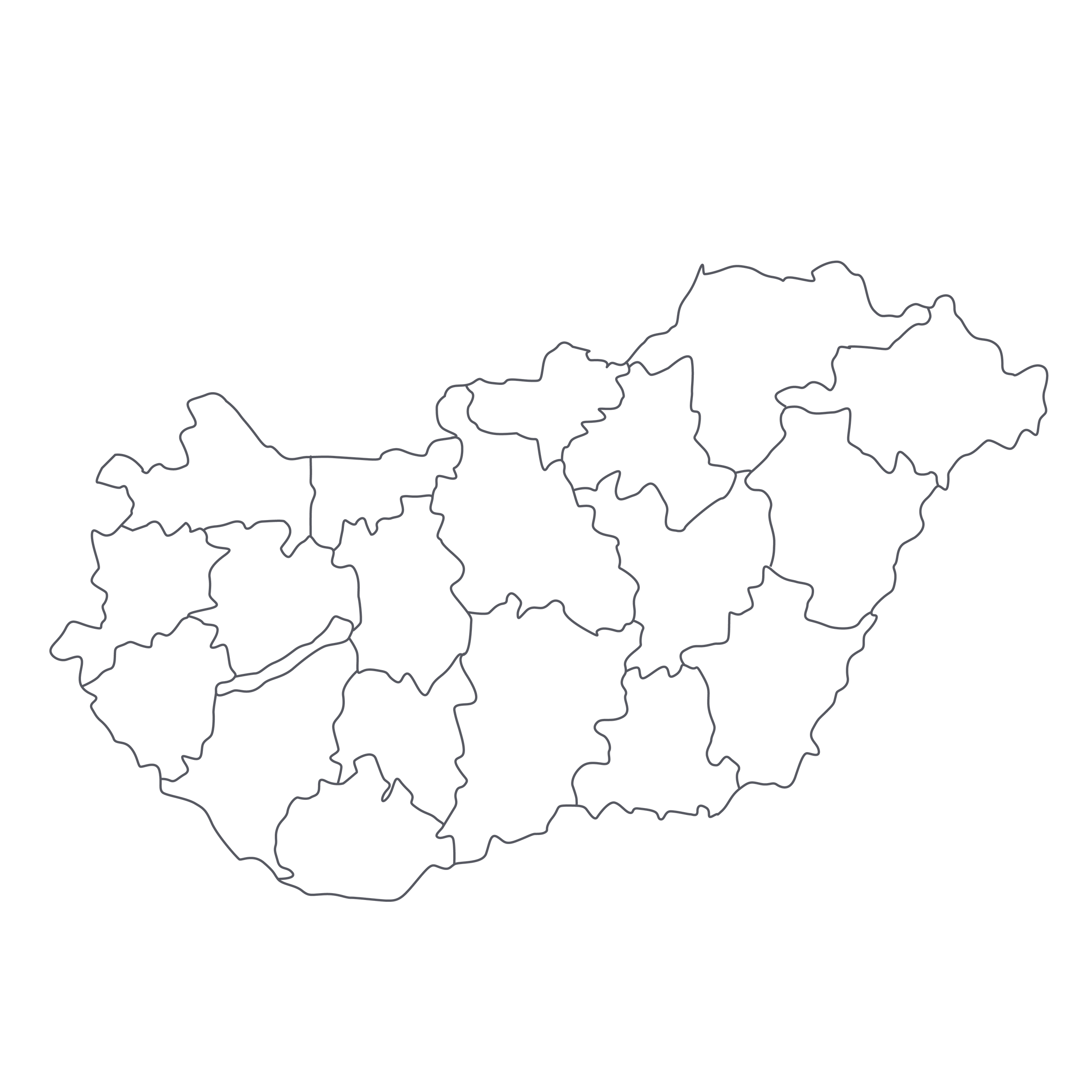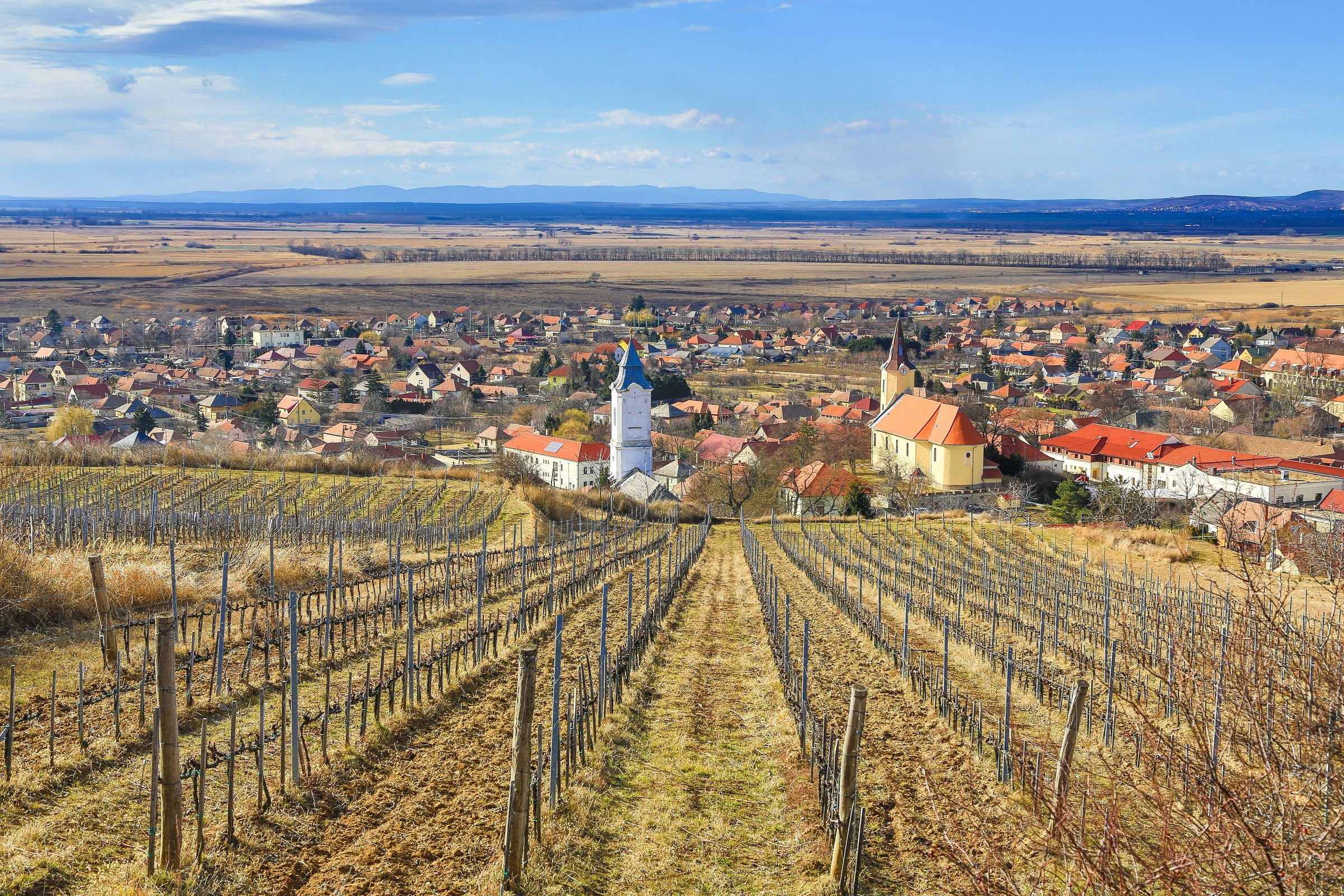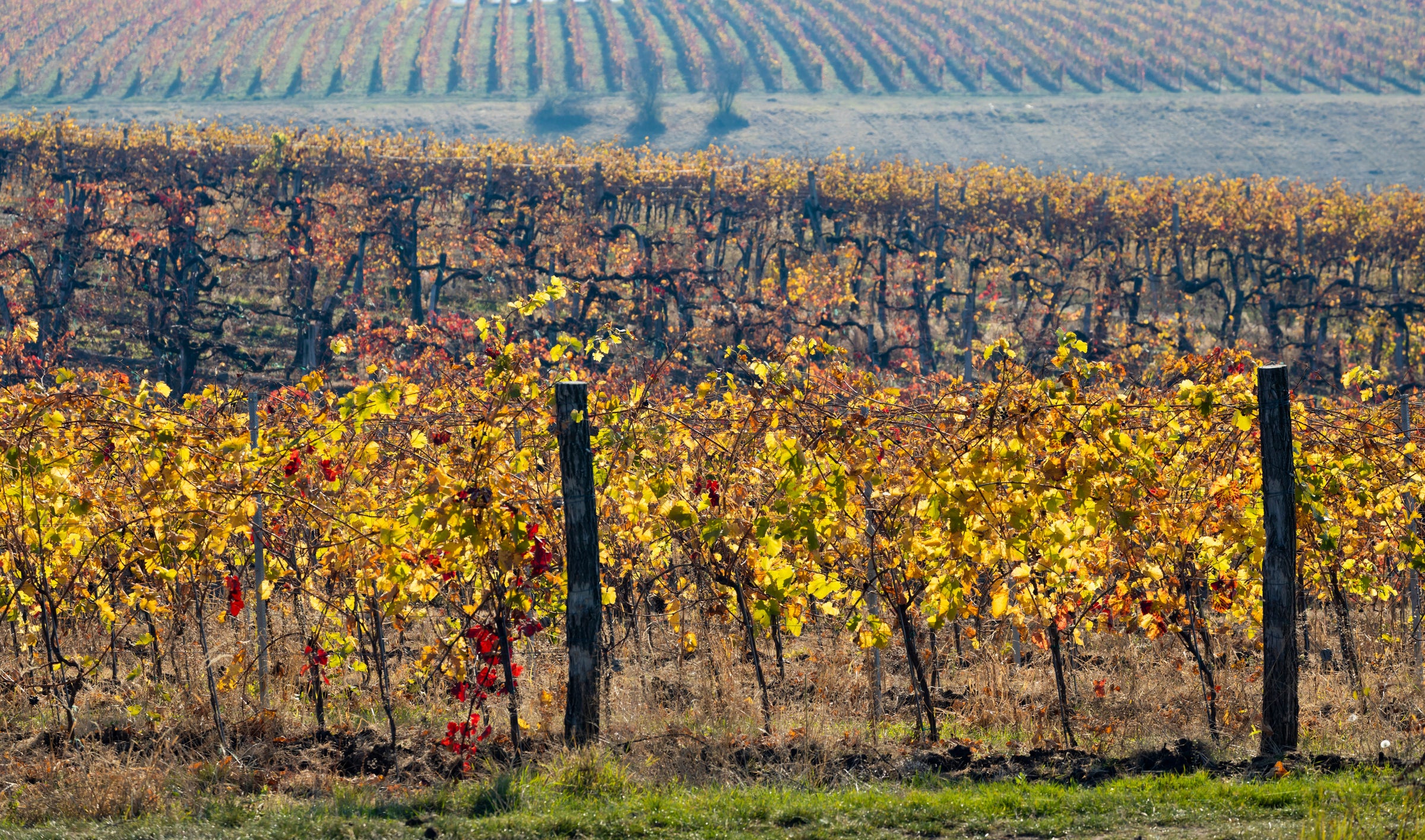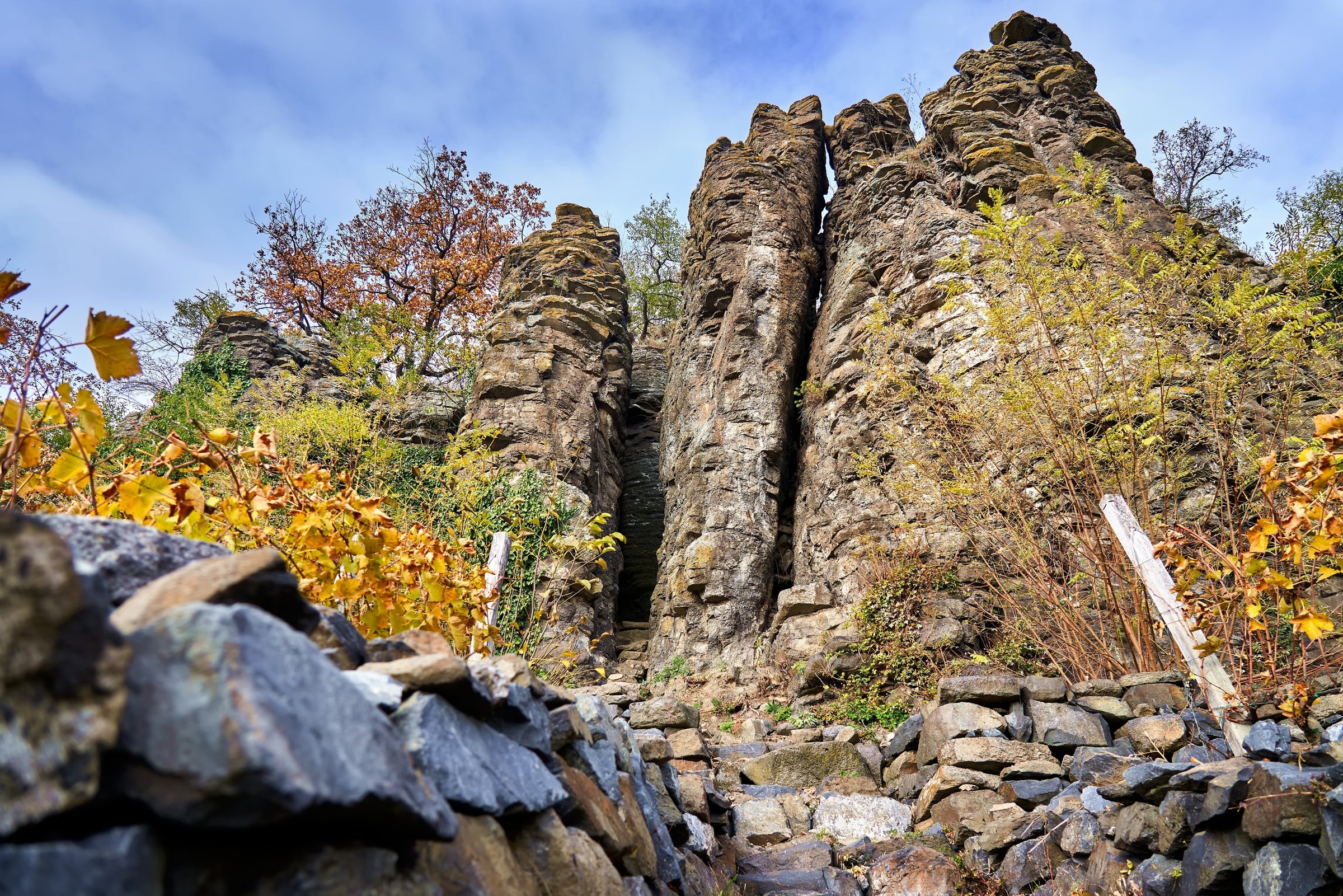It used to be a novelty to offer a Hungarian Kékfrankos. Now it’s a necessity. Anyone who cares about maximizing their wine dollar needs to be plugged into Hungary’s fast-evolving wine scene—whether it’s a steely dry white from Furmint or Hárslevelu or a tangy red from Kékfrankos or Kadarka, we continue to be blown away by the skyrocketing quality (and scandalous value) of Hungarian wines.
Today we’re back with a juicy, spicy, character-rich Kékfrankos from János and Péter Stumpf, a father-son team blessed with vision, talent, and heirloom vines that climb past 500 meters on the slopes of Nagy-Eged. This modestly priced 2018 will test your powers of description, summoning memories of everything from juicy Cru Beaujolais to spicy Loire Valley reds to, of course, Austrian renditions of Blaufränkisch. It’s a lip-smacking riot of dark, tangy berries, crushed rocks, wild herbs, peppery spice, and vibrant energy, at once beguilingly foreign and strangely familiar. The foods and occasions that would be perfect for this wine are innumerable. It should not be missed!
We’ve featured wines from János Stumpf in the past, so his biography may be familiar to some. He grew up in Hercegkút, a village within Hungary’s fabled Tokaji wine zone, and became a physician and ambulance driver before beginning to dabble in winemaking. He apprenticed with one of the most famous names in Hungarian wine, Tibor Gál, and later partnered with Hungarian-born Master Sommelier János Szabo on a Kékfrankos-focused wine project. Now he’s brought his son, Péter, into the mix at their eponymous winery, whose labyrinthine cellars are dug into the volcanic tuff of their home region, Eger, a region named for its anchor city in northeastern Hungary.
János and Péter farm approximately 20 hectares of vines within the south-facing Nagy-Eged (Eged Mountain) and on the slopes of Sikhegy (Sik hill). The higher altitudes of Nagy-Eged are richer in limestone, whereas Sikhegy is dominated by volcanic tuff. Regardless of grape variety, the limestone is said to deliver more body and extract, while the volcanic soils yield less body but higher acidity.
Along with Kadarka, Kékfrankos was the signature native red of Hungary before producers began working more extensively with Bordeaux varieties like Cabernet Sauvignon and Merlot. It was most famously used in the bikavér (bull’s blood) wines of the Eger region, but it fell out of favor for a time, especially during the many years the Hungarian wine industry was nationalized under Communist rule. Although not officially certified, Stumpf’s 50-year-old Kékfrankos vines are farmed organically, the fruit is hand-harvested, and fermentations are carried out spontaneously, with macerations lasting about three weeks. The wine is then aged for 20 months in 500-liter Hungarian oak casks before bottling.
There’s still a pleasing youthfulness to this 2018, along with some seriousness—far more than just a bistro-style quaffer, this is beginning to develop some real complexity. It displays a characteristically deep roasted-beet color in the glass, with an array of aromas and flavors that are at times somewhat familiar—some iodine à la Cru Beaujolais, some black pepper à la Rhône Syrah—and some which almost defy description. It’s a mix of tangy red and black berries, licorice, purple flowers, crushed stones, sandalwood, nutmeg, and wet clay. It is aromatic and mouthwatering, and benefits from a brief decant. Serve it cool, around cellar temp, in Burgundy stems and pair it with grilled salmon, roast chicken, grilled sausages, and plenty else besides—this is a food wine extraordinaire, with lots of savory spice balancing the bright, juicy fruit. If you’re surprised by how much you love it, don’t be— Kékfrankos is here to stay!







